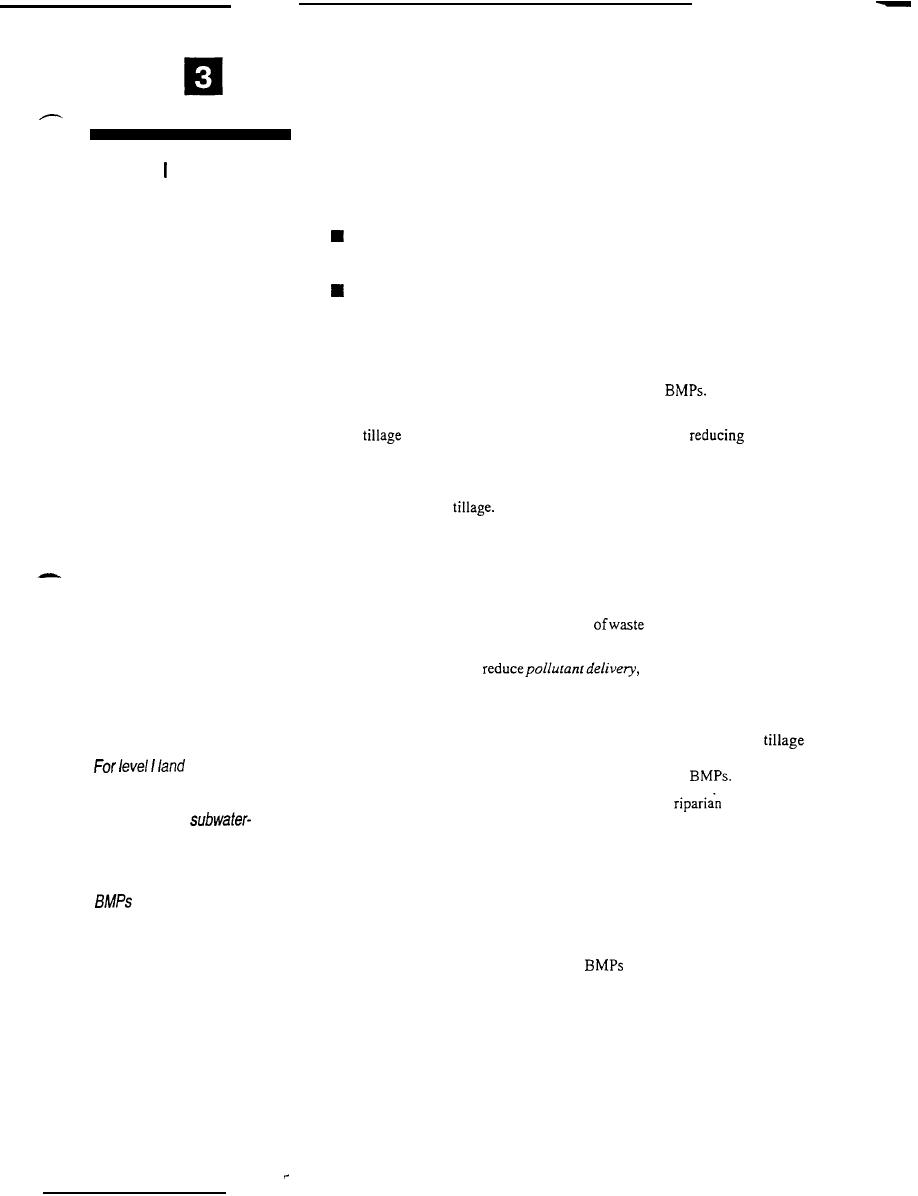
Level Land Treatment
To track land treatment implementation, explanatory variable(s) must be selected
and Land Use Monitoring
that will accurately reflect the desired land treatment effect. Land treatment
impacts can be expected in three areas:
source area (field, confined animal operation, forested tract, urban area),
n
--
delivery area between source and receiving ecosystem,
direct ecosystem effects.
For monitoring source urea, the number of acres treated and untreated with BMP
systems should be tracked. It is not correct to simply add up the total area treated
for each practice. For instance, terraces and nutrient management practices may
be applied on a lo-acre field. The total number of acres treated would be 10
because the single source area was treated with two
The acres treated
should not be double-counted as 20.
erosion, the
If no
(NT) or crop residue management is selected for
number of critical acres that have 30% area! residue coverage (or some other
standard) prior to planting should be tracked. Residue varies greatly for NT, and
tracking residue density is a better measure than estimates based on type of
equipment used for
For phosphorus problems due to animal waste, both the number of animal units
in critical areas and the tons of manure produced and treated should be tracked.
Both structural and management systems should be monitored to determine if the
waste management system is being operating properly and that manure applica-
tions and fertilizer use matches an approved nutrient management plan. Waste
storage facilities may help for proper timing
applications to fields but they
do not prevent farmers from over-applying nutrients.
the number of acres treated by
For practices designed to
the practice may be reported. Buffer strips, field borders, and sediment basins are
installed at the edge of the source area to reduce pollutant delivery. The acres
treated by these practices refer to the field watershed or source area contributing
runoff to the BMP. If the source area is also treated with conservation
or
nutrient management it is important not to double-count the total acreage treated
treatment
by combined source area and pollutant delivery reduction
and land use monitoring,
Direct ecosystem effects include the activities in the
area and in the
watershed and
resource. The extent of cattle grazing or other animal use of the stream should be
tracked. Crossing the stream with agricultural or logging equipment can have an
shed summaries should
important effect, and these events should be documented.
include acres served by
The land use in critical and noncritical areas should be known. Example land use/
on an annual
treatment variables are included in Table 3.3. For each variable the extent of
activity and location of activity are important.
basis.
For level I land treatment and land use monitoring, watershed and subwatershed
on an annual basis. These annual
summaries should include acres served by
drainage area summaries should emphasize explanatory variables that relate
directly to the pollutant or condition of concern. Aerial photographs may be useful
to track land use and BMP implementation in rural areas. Also aerial photographs
and city planning maps may be used to categorize urban land use based on percent
impervious area.
3.6


 Previous Page
Previous Page
